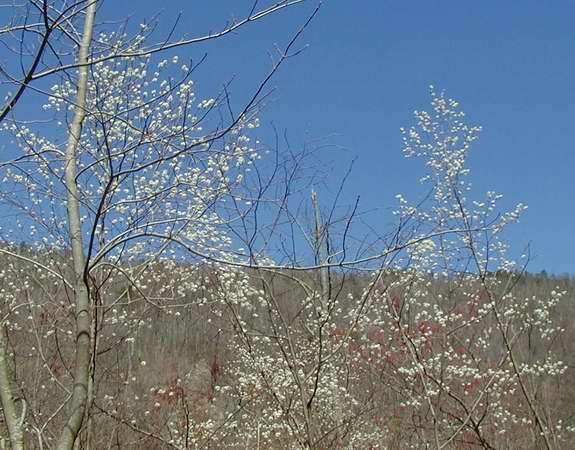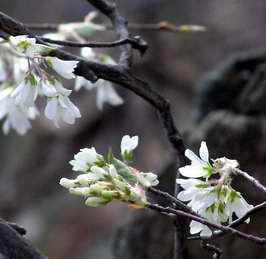|
Common Name: Serviceberry, Shadblow, Shadbush, Juneberry, Sarvis, Saskatoon Scientific Name: Amelanchier arborea (The Genus is derived from the French word for a European species of the serviceberry, arborea is Latin for branching)
Serviceberry is a low-spreading small tree or shrub that flowers very early in the spring in forest understories and on open hillsides and rocky slopes.
Potpourri:
The name serviceberry is derived from the practice of isolated
mountain communities in early America to postpone funeral services for those
who died in the winter until the spring when the ground was no longer frozen.
The flowers of the tree, the first to bloom in the spring, were
gathered for church services. The
name "sarvis" is argot in some mountain regions for service. In area
where the influence of the church was not as per
The berries were one of the primary ingredients of pemmican, a portable meal of dried meat, animal fat, and berries that was used on hunting trips and in the winter by Native Americans. The antioxidants in the berries helped to delay the spoilage of the meat. They also used the wood for arrows, spears, and crosspieces for canoes.
The name Saskatoon comes for the Cree name for the berries, misaaskwatoomin. The city of Saskatoon in the province of Saskatchewan was named after the berry due to the practice of selling the berries on the original town site by calling out their name. |

 vasive,
the name shadbush or shadblow was used to refer to the fact that the flowering
of the tree coincided with spawning of shad along the North Atlantic Coast.
vasive,
the name shadbush or shadblow was used to refer to the fact that the flowering
of the tree coincided with spawning of shad along the North Atlantic Coast.